[Before reading this post, you might like to look at Feeling Crap: A Brief Introduction to Your Suffering Mind, as well as Feeling Crap 2: The Three Layers of Your Suffering Mind.]
HOW DO WE FREE OURSELVES FROM FEELING CRAP?
That’s the million dollar question isn’t it.
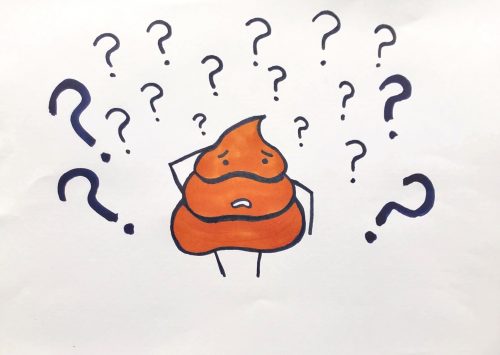
The Suffering Mind wants none of this crap, this very human-suffering-crap – for no other creature on this planet suffers in the way that we do. None of them possessing the language with which to suffer: words, concepts, abstract symbols that can make thoughts and feelings and text-messages as mind-breakingly real at times as sticks and stones.
My dog Max experiences the pain of existence in exactly the same way that I do: the pain of physical and emotional injury, the pain of social abandonment and exclusion, of not getting what he wants. Max experiences “reality slaps” like this on a daily, even hourly basis (as do I). But he doesn’t suffer them in the way that you and I do. Not one bit.

Max will never write a blogpost or create a piece of technology called a laptop on which to write it. Nor will he, or any other member of his species invent something like the internet to disseminate these words to other sentient, language-producing creatures.
Us homo sapiens have immeasurably benefitted from language, but consider for a moment the price we’ve had to pay in allowing language to be the primary currency of all our mental processes. Because that’s how, for the most part, we communicate both inside ourselves as well as externally with other human beings. Think of the ways in which language produces joy and pleasure but also immeasurable suffering for each and every one of us on a daily basis, and for our human species as a whole.
ALLEVIATING SUFFERING & ENHANCING WELL-BEING
If everything your language-focused mind has been trying to do so far hasn’t really helped, or helped in only a small way, maybe it’s time to look at some other options?
If you’re frequently locked in the struggle I’ve described above with your pleasure-seeking, pain-avoiding, problem-solving mind, maybe you need a more RADICAL solution: one that still uses language (our primary currency, we can’t avoid it), but is also opens us up to other channels of processing?
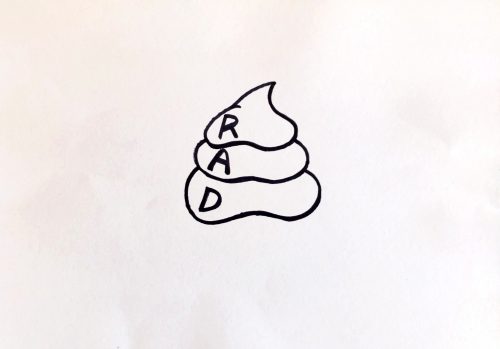
What we perhaps need is a solution that targets those three crappy layers, but not necessarily in the default Jim’ll Fix It ways of this thinking/languaging lump of human meat we call “the brain”.
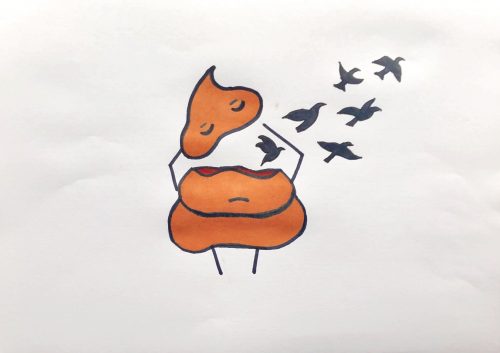
If the Blinkered Mind is programmed to say GO AWAY to pain, as well as becoming at times overwhelmingly FUSED with it, then one thing we can maybe start to do is introduce some Receptive Mind strategies into the mix.
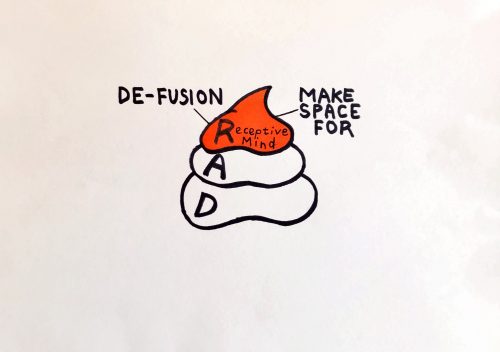
In this layer, we might need some DEFUSION processes to help us when we’re “stuck” in a particularly strong reaction (mental or physical) to a painful event.
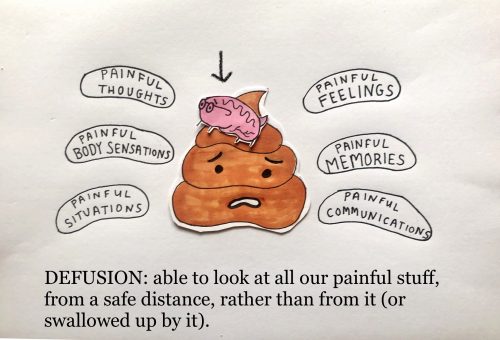
We might also start practicing MAKING SPACE FOR for difficult thoughts and feelings.
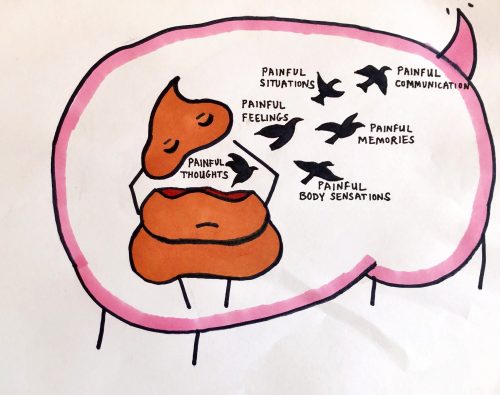
MAKING SPACE FOR practices are an alternative to allowing the mind to do what it does best and by default: pushing painful stuff away, or wrestling interminably with it in the hope that it can be solved like a maths problem. This might help us to free ourselves up to focus on more meaningful actions and activities instead.
Part of this might also involve cultivating the second layer of RADness: Aware Mind.
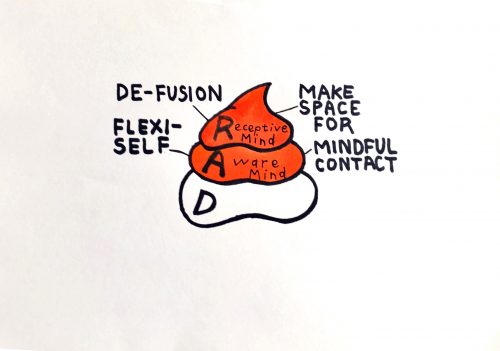
One aspect of Aware Mind is the development of a more FLEXI-SELF approach to life’s challenges: practising ways of seeing things from different, and hopefully more helpful angles. Also: not getting into arguments or disagreeing with what our minds tell us about the world and ourselves.
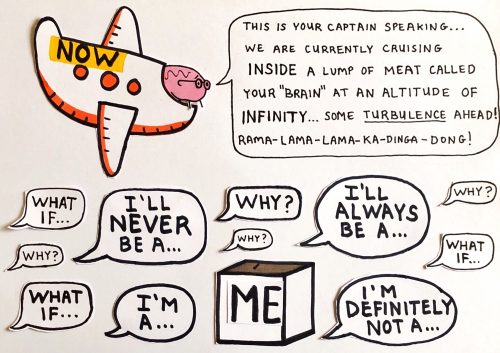
To help us do this, we might need to “drop anchor” again and again in order to bring our minds back in MINDFUL CONTACT with what’s actually going on right here and now, as opposed to the what’s happening inside our language-filled heads.
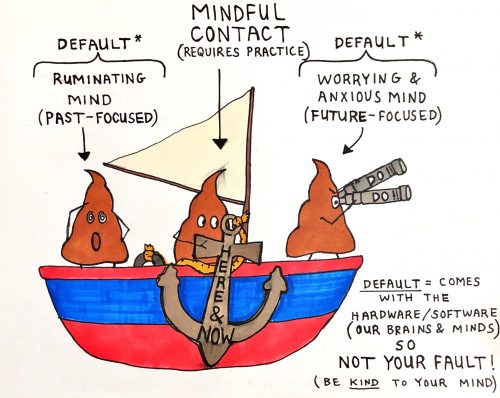
Also, let’s clarify your core values and begin some devoted, committed action: a few small steps, towards some meaningful goals in your life.
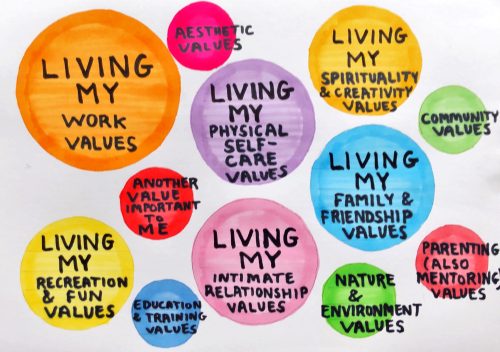
Each of the drawings in this post took me varying amounts of time to create, from a few minutes to a number of hours, and many weeks of writing and fiddling around with words and images to put it all together. The process was at times frustrating and disheartening when things didn’t go according to plan, but in the end I got this crappy little article out of it – a crappy little article which is meaningful to me, and hopefully for you too?
I’ve deliberately used a somewhat “spiritual” word here for the third RAD layer: Devoted Mind. Not because the valued actions need to be religious or spiritual per se.
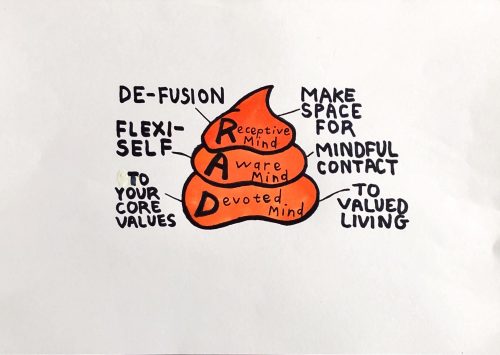
You can be devoted to your family, or to a creative pursuit, or a football team. I’m devoted to my dog Max, and to my therapy practice, also to learning poems I love, like this one, off by heart (preferably on a walk or a hike). But I don’t have any expectation that you could or should become devoted to dogs or poetry or hiking, unless these are aligned with your core values!
We need to work out what you want to be devoted to, as well as how you’re going to show (through your actions) your devotion. It does seem though that choosing something important in our lives “to set apart by a vow” (the origins of the word “devoted”) is almost essential when it comes to living life the fullest.
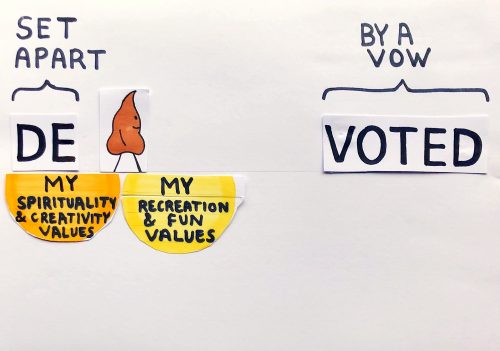
You get to choose however what you want this to be and how you can turn that into something meaningful that you can then dedicate time and energy towards.
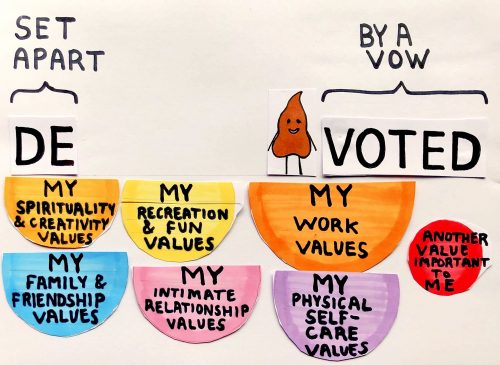
So are you ready to take back control of your super-helpful, often over-helpful, problem-solving, pain avoiding (crappy) brain and get back to living your life to the fullest?
If you are, let’s talk some more about this RAD crap and see how I can help you to get a bit closer to some of the peace and contentment you seek, that we all seek, as well as a life that is valued and meaningful to you in the long run.
**
If you’d like to arrange an initial consultation session to talk more about whatever it is you’re struggling with at the moment, we can organise that via email or telephone (07804197605).
Also please feel free to drop me a line if you have any other questions regarding the therapy I offer. I look forward to hearing from you.

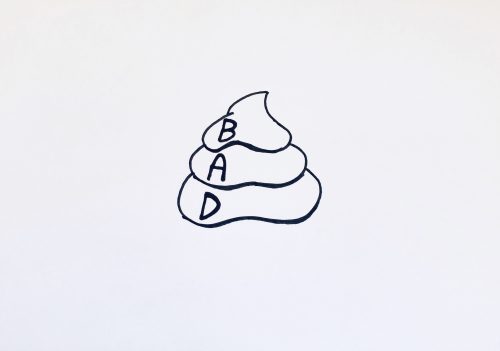
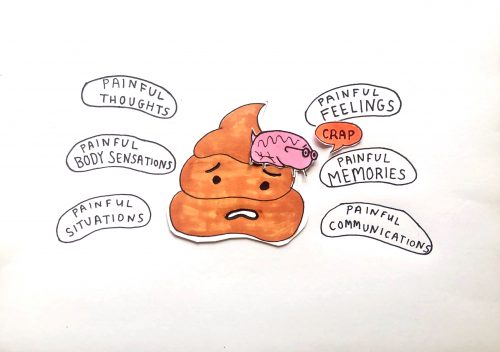
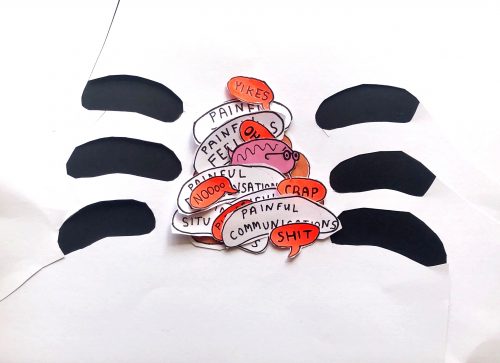
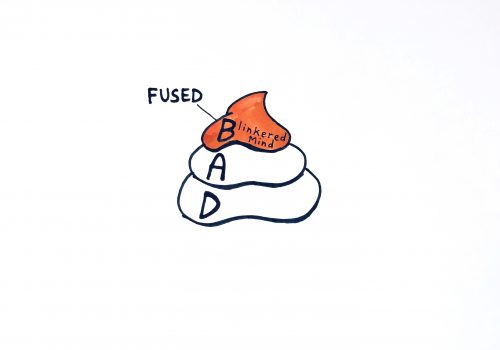 Also, because pain in any shape or form is so uh painful, our suffering Blinkered Minds will often try to avoid this pain in a very intuitive way.
Also, because pain in any shape or form is so uh painful, our suffering Blinkered Minds will often try to avoid this pain in a very intuitive way.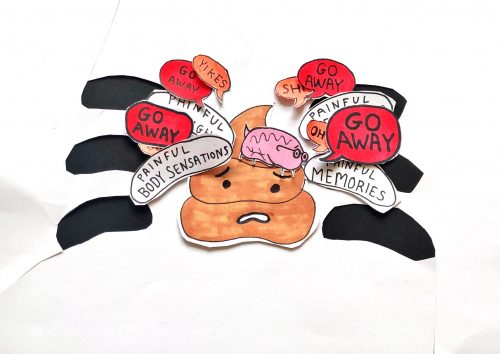
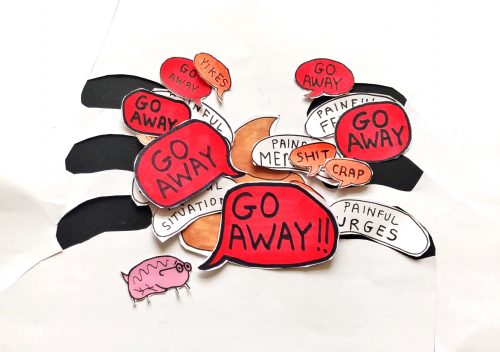
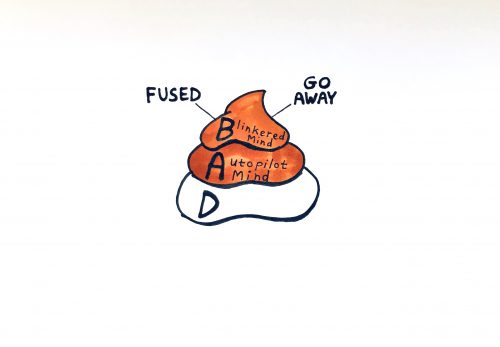
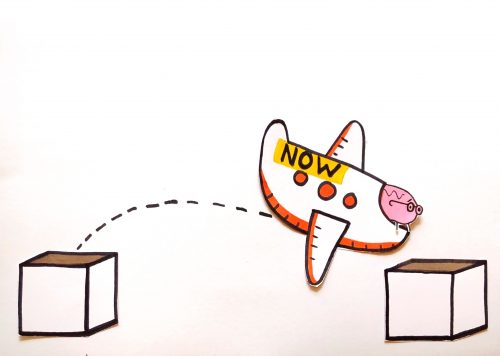
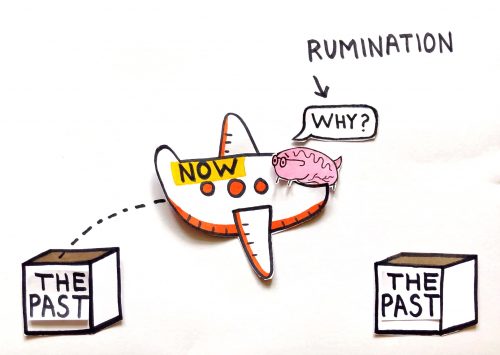
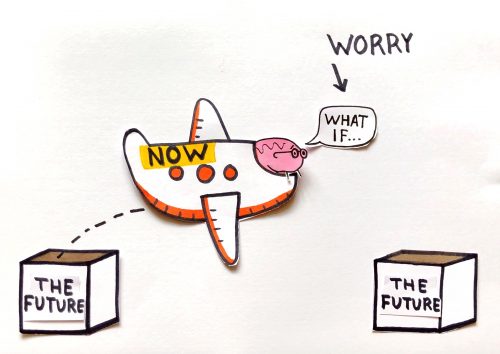
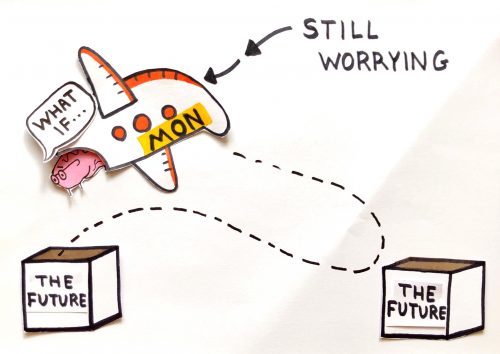
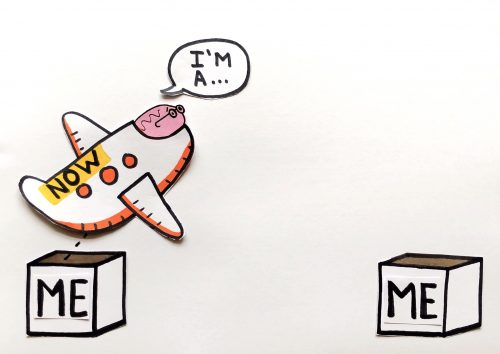
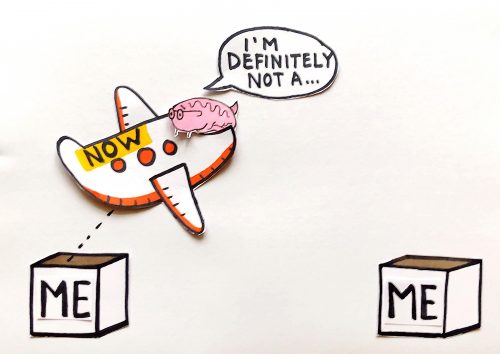
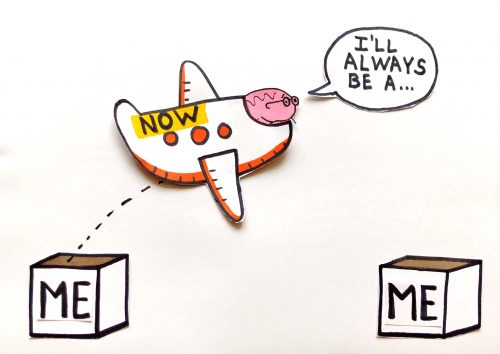
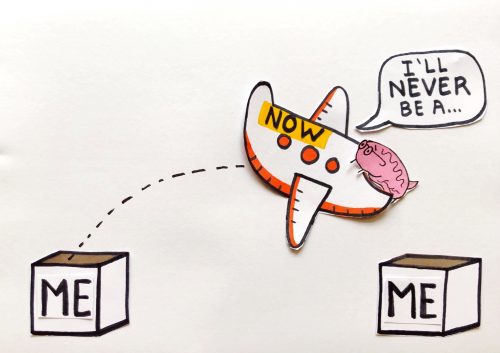
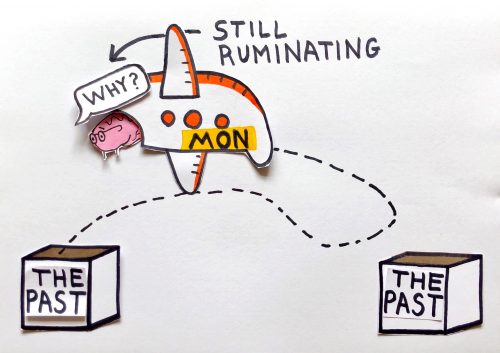
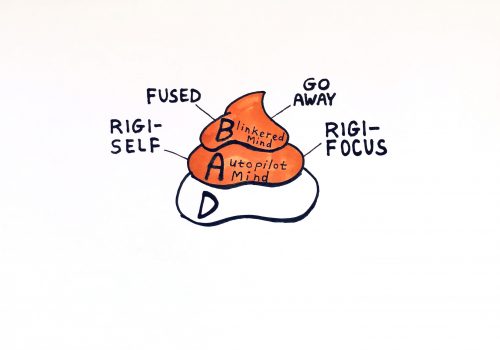
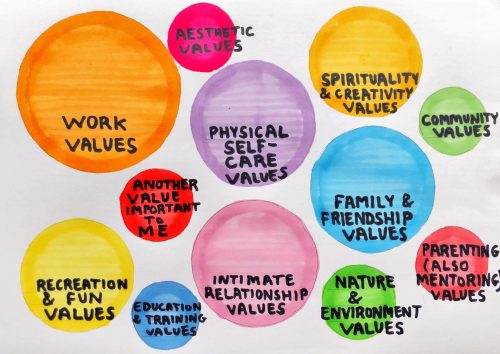
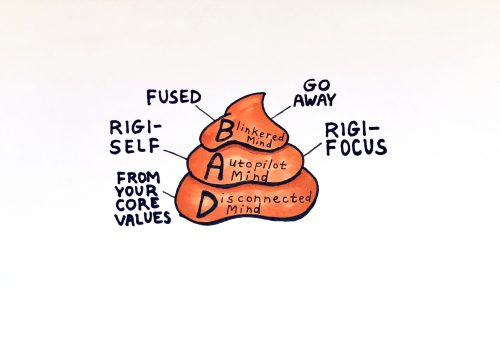
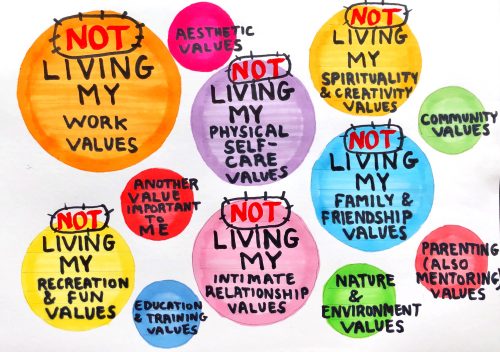
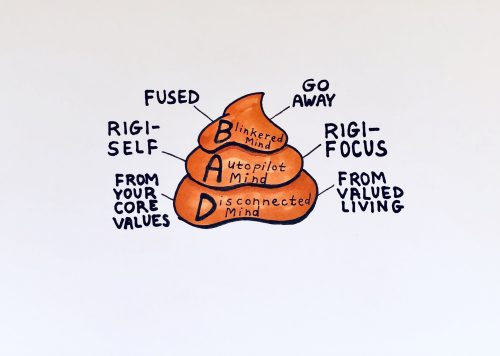

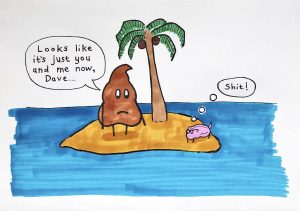
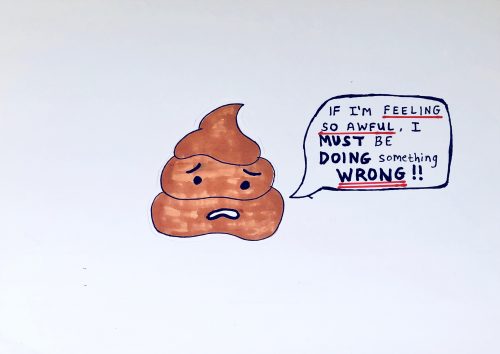
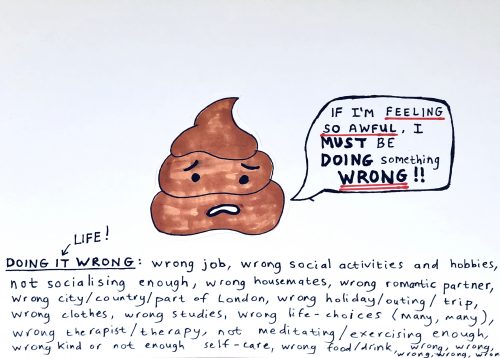
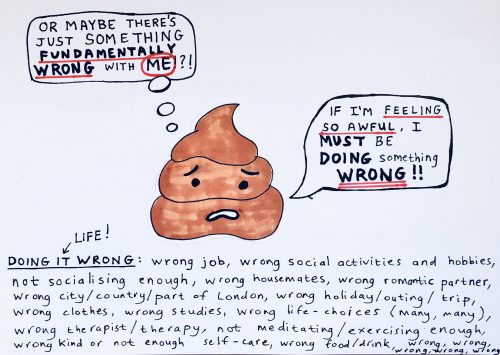
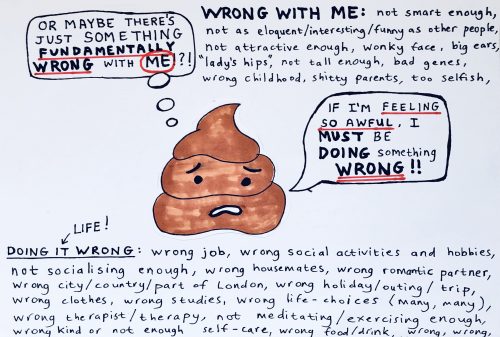



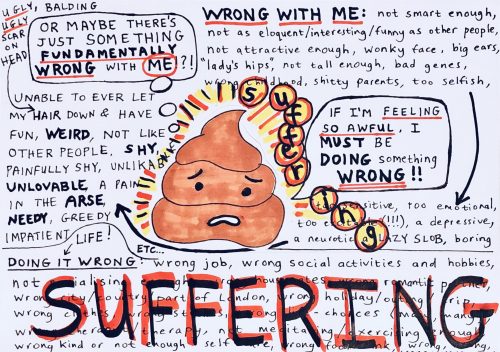
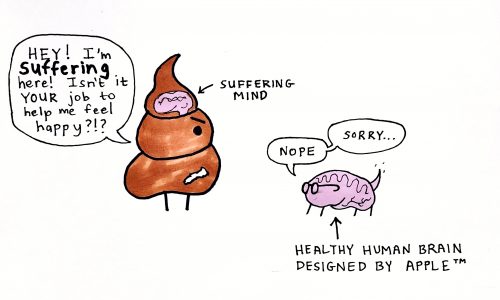 He’s right though.
He’s right though.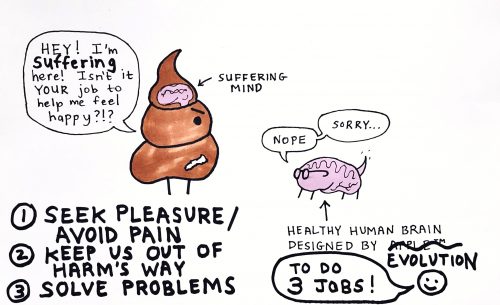
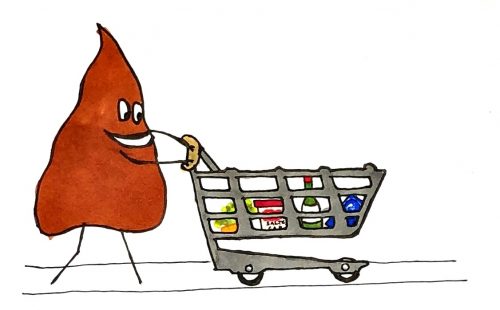 I’m also relieved to have seen and avoided my neighbour – the one I had an argument with with last week who I spotted walking down another aisle. Whew, and another dopamine hit of pleasure!
I’m also relieved to have seen and avoided my neighbour – the one I had an argument with with last week who I spotted walking down another aisle. Whew, and another dopamine hit of pleasure!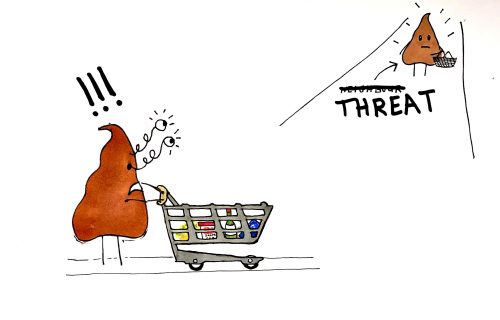 But maybe that evening I eat the whole tub of Hagen Daz as I am wont to do and drink most of the wine and feel sick and full of self-loathing.
But maybe that evening I eat the whole tub of Hagen Daz as I am wont to do and drink most of the wine and feel sick and full of self-loathing.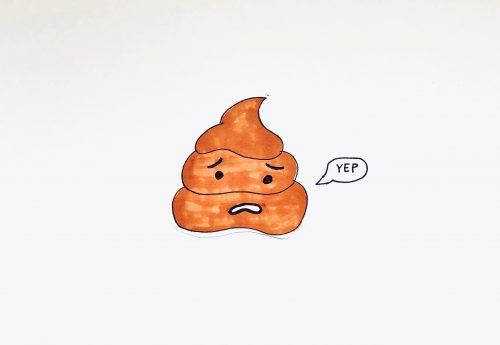
 We need to talk about ritual. The anthropologist Roy Rappaport writes: “Humanity is a species that lives and can only live in terms of meanings it itself must invent.” If this is so, ritual is fertile ground for creating meaning in our lives.
We need to talk about ritual. The anthropologist Roy Rappaport writes: “Humanity is a species that lives and can only live in terms of meanings it itself must invent.” If this is so, ritual is fertile ground for creating meaning in our lives. There is a well known poem by James Wright with a title so long it sounds almost silly at first: Lying in a Hammock at William Duffy’s Farm in Pine Island, Minnesota. The poem, I think, gets to the heart of what I’m trying to understand here. It shares the experiences of a human creature, Wright (?) having a series of devotional, almost otherwordly moments, and yet the poems also stays profoundly embedded in this world, the world of nature. It also ends on a real humdinger of a last line. If poems had ‘plot twists’ a la The Sixth Sense and The Usual Suspects, this would be it.
There is a well known poem by James Wright with a title so long it sounds almost silly at first: Lying in a Hammock at William Duffy’s Farm in Pine Island, Minnesota. The poem, I think, gets to the heart of what I’m trying to understand here. It shares the experiences of a human creature, Wright (?) having a series of devotional, almost otherwordly moments, and yet the poems also stays profoundly embedded in this world, the world of nature. It also ends on a real humdinger of a last line. If poems had ‘plot twists’ a la The Sixth Sense and The Usual Suspects, this would be it.![[Photo by noitacifier]](http://stevewasserman.co.uk/wp-content/uploads/2015/11/20770413551_128507eb18_b-300x200.jpg)
![[Photo by Sabik Akand]](http://stevewasserman.co.uk/wp-content/uploads/2015/11/8149782466_1869bf0e65_k-300x169.jpg)
![[Photo by Cecilie Sønsteby]](http://stevewasserman.co.uk/wp-content/uploads/2015/11/6299594735_427f169f12_b-213x300.jpg)
![[Photo by eivindmork]](http://stevewasserman.co.uk/wp-content/uploads/2015/11/5772709774_750a4e5d57_b-300x143.jpg)
![[Photo by Wonderwebby]](http://stevewasserman.co.uk/wp-content/uploads/2015/11/2723279491_215b8dda01_o-300x214.jpg)
